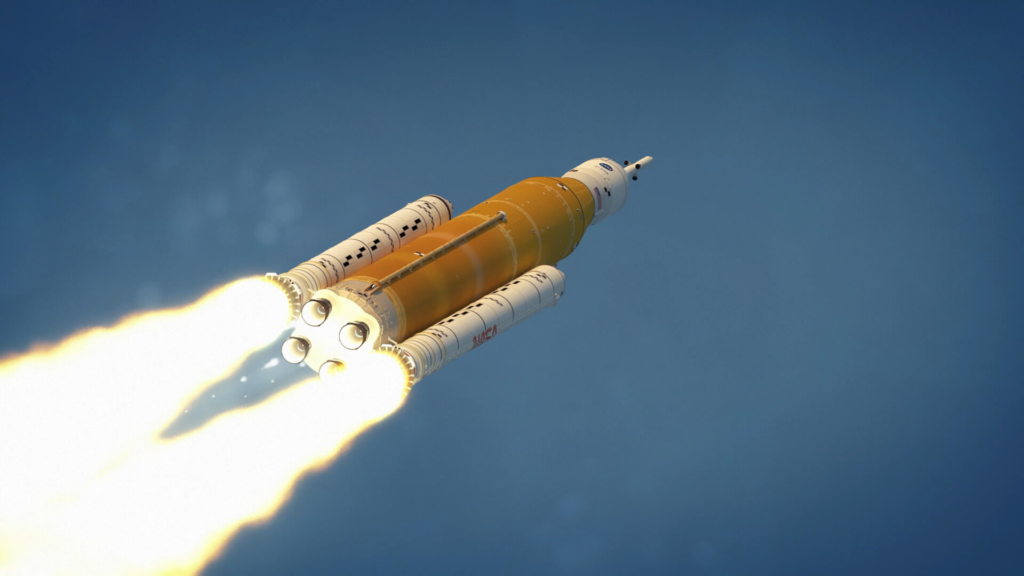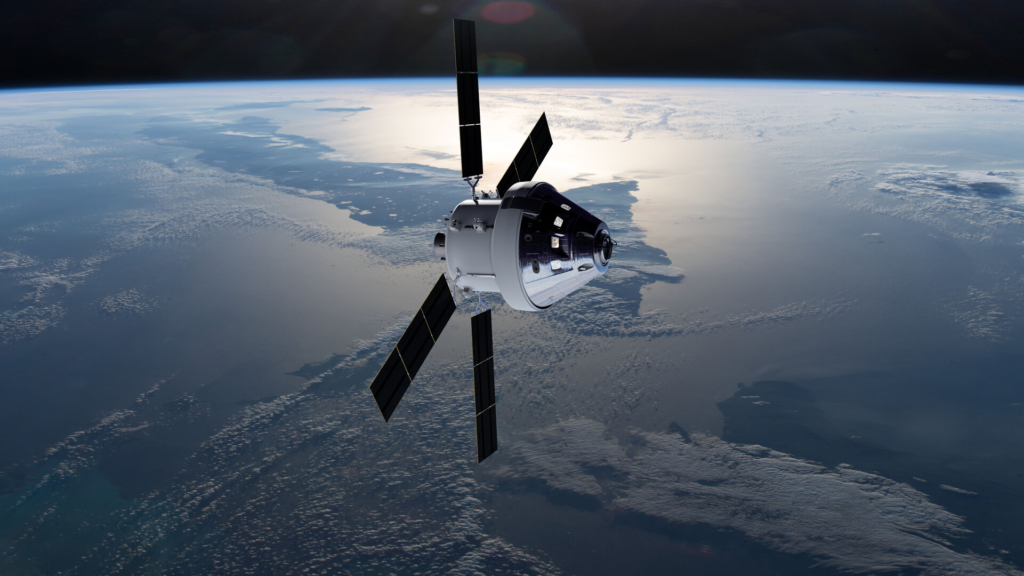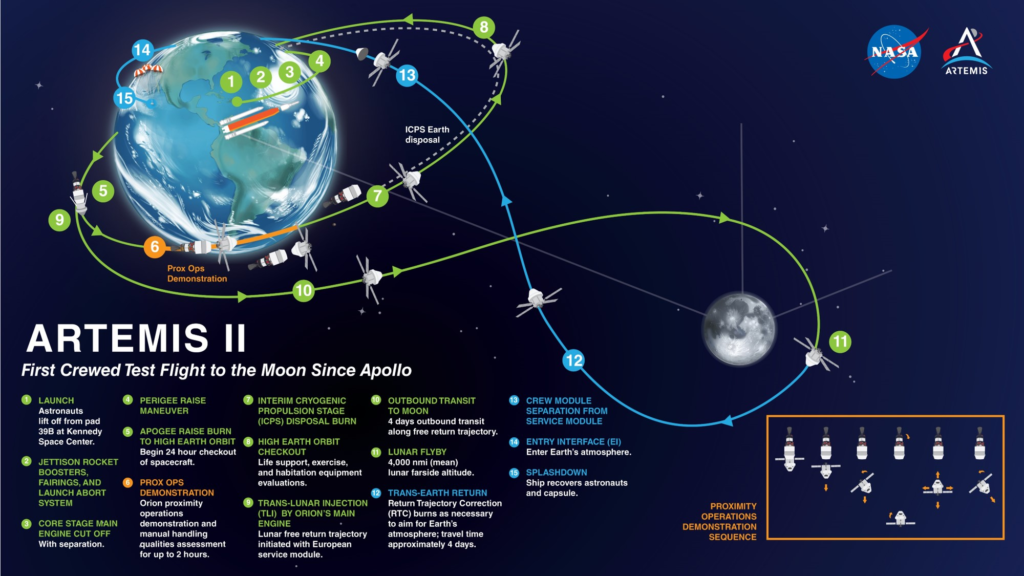
Progress Is Being Made On The Artemis II Mission
Before humans step foot on the Moon once again, a few key missions need to take place apart of the Artemis program. Only months ago the Artemis I mission took place and was a major success. Now in early 2023, a bunch of different preparation and work is being completed for Artemis II. A mission NASA is still scheduling not long from now in 2024.
These recent updates include work on Orion’s Service Module, propulsion test projects for the agency, core stage progress, and more. While Artemis II will not land humans on the surface, it will be the first crewed mission on SLS and Orion and travel deep into space before returning to Earth. If successful, this will be the final mission before the long awaited Artemis III when humans make history once again.
All this being said, there are some schedule concerns the agency is facing. Based on current progress and what’s still left to complete, it’s very possible that Artemis II gets pushed back into 2025 which would have a domino effect on other important missions. Here I will go more in-depth into recent Artemis II progress, what delays and other concerns the agency is facing, what to expect in the coming months, and more.
Artemis II Updates

The overall goal for Artemis was to have each mission follow the previous within a short period of time. For this reason, NASA and its patterns began working on future Artemis missions such as II and III years in advance. At this point, quite a lot of progress has already been completed in preparation for Artemis II. Starting only two days ago the agency tweeted saying, “Pushing Orion’s first crew to the Moon! Technicians at @NASAKennedy install the engine nozzle on the service module that will propel Orion on #Artemis II.” Specifically, technicians are currently working on the European Service Module that will help power and propel the Orion spacecraft carrying astronauts around the Moon on the Artemis II mission.
On Jan. 13, 2023, the service module was moved into a lifting station to enable technicians to install Orion’s orbital maneuvering system engine nozzle and heat shield, which was completed on Jan. 16. The service module provides in-space maneuvering capability, power, and life support commodities necessary for astronauts onboard Orion. Artemis I proved the success of this system and verified its use for humans not long from now.
In addition, on the 24th NASA tweeted mentioning, “2023 will be another exciting year for rocket propulsion testing! A certification test series will begin early this year at @NASAStennis on a full RS-25 certification engine built to power the SLS rocket for #Artemis V and beyond.” This helps put in perspective how far ahead work is being completed.
Focusing back on Artemis II, in September of last year teams delivered the four RS-25 engines that will help power the first crewed mission. Not long from now the engines will be installed into the Artemis II core stage, which is in the final phase of assembly. Trucks transported the engines in special containers from NASA’s Stennis Space Center near Bay St. Louis, Mississippi, where they were upgraded with new controllers.
Together, the four RS-25 engines will produce more than 2 million pounds of thrust during ascent to help send Artemis II astronauts beyond Earth’s orbit to lunar orbit. Technicians from NASA and Aerojet Rocketdyne, the prime contractor for the engines, will store the engines and prepare them for integration into the engine section at the bottom of the rocket’s 212-foot-tall core stage. They will use a pathfinder engine to practice the intricate process of installing each engine on the stage prior to installing the flight engines. The first engine – Engine E2047 — of the flight set flew on 15 space shuttle missions, including the final shuttle mission STS-135. The second engine of the set – Engine E2059 — previously flew on five shuttle missions. The third and fourth engines – E2062 and E2063 – are new engines that include some previously flown hardware.
Looking at the timeline and prep for Artemis I and comparing that to current operations gives us a better idea of what to expect in the future. For example, in late 2019, NASA attached the four RS-25 engines to the core stage of the Artemis I rocket. Around three years later the rocket lifted off for the first time ever. The current Artemis II hardware is in a similar timeframe although the agency now has some very valuable experience. Something that will no doubt impact the upcoming launch.
Mission Overview & Delays

Now that we know more about some of the recent updates and progress on Artemis II, we can take a closer look at possible delays and the mission itself. As partially mentioned prior, Artemis II is officially scheduled to happen in May 2024. Nevertheless, a few major concerns are pushing this date back to a more realistic 2025 launch. To summarize, key components for the mission’s Orion capsule are being reused from Artemis 1 and must first undergo a series of post-flight validation tests before being installed on the new spacecraft. A process that will no doubt take a significant amount of time.
This is where the problem originates. In this case, Artemis 2 was originally slated to fly on an SLS Block 1B rocket, a larger upgraded version of the SLS used for Artemis 1, which replaces the vehicle’s Interim Cryogenic Propulsion Stage (ICPS) with the more powerful Exploration Upper Stage (EUS). With this upgrade came the need for NASA to upgrade the mobile launch platform among other things that they allocated a three year gap for. However, by 2018 the agency scrapped plans to use the upgraded SLS variant and instead decided to use the standard Block 1 SLS configuration that we just saw lift off. This helps speed up the readiness of SLS and various infrastructure, but the Orion reuse parts still need that long period of time for testing and then application to the new system. While this process was thought to have plenty of time due to other necessary upgrades, it now is acting as a road block to the future mission.
On the bright side, the success of Artemis I was a very big deal and set the stage for Artemis II. This being said, this next mission profile is quite different and features many new challenges. The mission will launch a crew of four astronauts from NASA’s Kennedy Space Center on a flight profile called a hybrid free return trajectory. Orion will perform multiple maneuvers to raise its orbit around Earth and eventually place the crew on a lunar free return trajectory in which Earth’s gravity will naturally pull Orion back home after flying by the Moon.
The initial launch will be similar to Artemis I as SLS lofts Orion into space, and then jettisons the boosters, service module panels, and launch abort system, before the core stage engines shut down and the core stage separates from the upper stage and the spacecraft. However, with crew aboard, extra precautions will be made in practically every part of the mission. After the burn to enter high-Earth orbit, Orion will separate from the ICPS. The expended stage will have one final use before it’s disposed of through Earth’s atmosphere—the crew will use it as a target for a proximity operations demonstration.
Following the proximity operations demonstration, the crew will turn control of Orion back to mission controllers at Johnson and spend the remainder of the orbit verifying spacecraft system performance in the space environment. After completing checkout procedures, Orion will perform the next propulsion move, called the translunar injection (TLI) burn. With the ICPS having done most of the work to put Orion into a high-Earth orbit, the service module will provide the last push needed to put Orion on a path toward the Moon. The TLI burn will send crew on an outbound trip of about four days and around the backside of the moon where they will ultimately create a figure eight extending over 230,000 miles from Earth before Orion returns home.
On the remainder of the trip, astronauts will continue to evaluate the spacecraft’s systems, including demonstrating Earth departure and return operations, practicing emergency procedures, and testing the radiation shelter, among other activities. The Artemis II crew will travel 4,600 miles beyond the far side of the Moon. From this vantage point, they will be able to see the Earth and the Moon from Orion’s windows, with the Moon close in the foreground and the Earth nearly a quarter-million miles in the background. With a return trip of about four days, the mission is expected to last just over 10 days. Instead of requiring propulsion on the return, this fuel-efficient trajectory harnesses the Earth-Moon gravity field, ensuring that—after its trip around the far side of the Moon—Orion will be pulled back naturally by Earth’s gravity for the free return portion of the mission.
Following these first two test flights, Orion and a crew of four will once again travel to the Moon, this time to make history with the next astronauts to walk on its surface. Beginning with Artemis III, NASA intends to launch crewed missions about once per year, with initial missions focused on establishing surface capabilities and building the Gateway in orbit around the Moon. From here the agency will take the experience gained exploring the Moon to prepare for the next giant leap to Mars.
Conclusion
NASA is in the process of preparing for Artemis II, III, IV, and beyond as I speak. In the last couple of months, we have seen an increase in the nearest mission Artemis II. This includes main engine delivery, Orion Service Module progress, engine tests, and more. While delays are possible, the agency is still aiming for a launch in the second half of 2024. We will have to wait and see how it progresses and the impact it has on the space industry.
